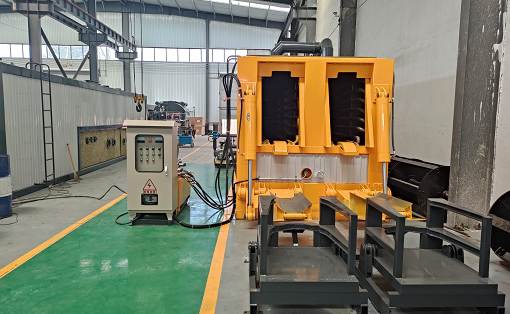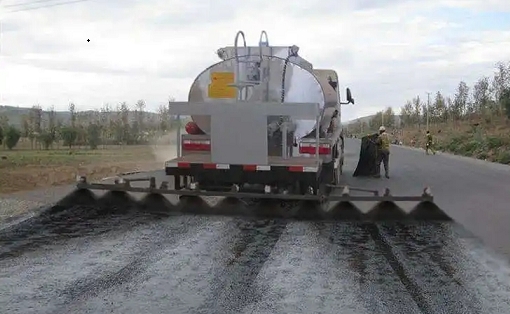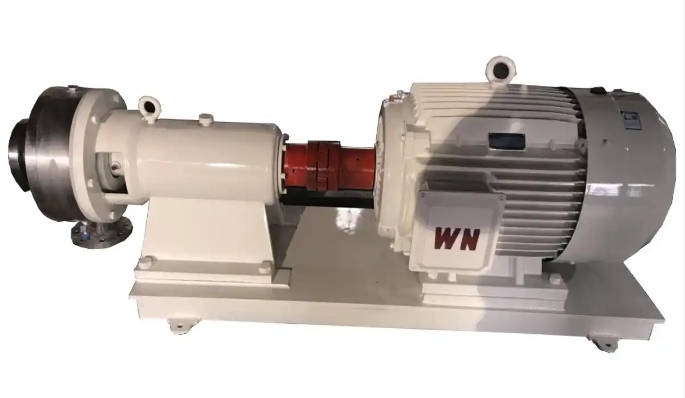Material composition and related technologies of micro-surfacing
Material composition and related technologies of micro-surfacing:
There are certain standards for the composition and mix ratio of micro-surfacing, and the materials used are also very wide, mainly including polymer-modified emulsified asphalt, various aggregates, cement, water, additives, etc. Raw material quality has a significant impact on microsurfacing performance, so understanding the performance of each component and the key factors that influence its performance is critical to ensuring the quality of your microsurfacing mix.
1. Emulsified asphalt
When ordinary asphalt is heated, it consumes a large amount of fossil energy and emits a large amount of smoke, seriously polluting the environment. In contrast, emulsified asphalt materials have outstanding advantages such as convenient construction, energy saving and environmental protection, reducing asphalt aging, and extending the construction season. They are in line with the development concepts of green development, conservation and intensification, low carbon and environmental protection proposed in the “Outline for Building a Powerful Transportation Country” and have been obtained. It has been widely recognized by the highway industry at home and abroad, so it is very suitable for highway construction and maintenance, especially among the current maintenance technologies, emulsified asphalt technology accounts for a large proportion.
Emulsified asphalt is composed of two mutually incompatible phases, that is, 1~5um asphalt droplets are dispersed into the water medium under the action of emulsifier to form a water-in-oil emulsion system. According to the charge difference of the hydrophilic segment of the emulsifier, it can be divided into four types, namely cationic emulsified asphalt, anionic emulsified asphalt, nonionic emulsified asphalt and zwitterionic emulsified asphalt. So far, cationic emulsified asphalt is common around the world. Cationic emulsifiers themselves are generally derivatives of organic amines, which are generally alkaline and need to react with acids to form ammonium salts, making them soluble in water and positively charged in order to emulsify. Usually, the pH range for preparing emulsified asphalt cationic aqueous solution (soap) is between 2 and 3.
In engineering applications, the main function of emulsified asphalt is to change the flow state of asphalt so that it can be used at room temperature. The matrix asphalt itself still plays the role of binder in the emulsified asphalt mixture. Therefore, the shortcomings of the matrix asphalt, such as easy aging, weak adhesion, poor high and low temperature performance, and poor water damage resistance, will also appear in the matrix asphalt. In order to solve this problem, high molecular polymers such as styrene-butadiene rubber emulsion and water-based resin are usually incorporated into the emulsified asphalt to improve the performance of the emulsified asphalt.
2. Asphalt emulsifier
As one of the important components of micro-surface mixture, emulsifier’s main function is to reduce the interfacial tension between water and asphalt particles, so that the two can form an emulsion uniformly and stably. In emulsified asphalt, the amount of emulsifier is often very small, but it is crucial to the processing, storage and use performance of emulsified asphalt. In my country, the “Technical Guidelines for Microsurfacing and Slurry Sealing” provides detailed explanations for the emulsifiers used in microsurfacing: Microsurfacing must use cationic emulsifiers due to limitations in raw material selection and construction conditions. And the dosage shall not be less than 3% of the asphalt dosage. As technology continues to advance, this requirement is not completely absolute. Commonly used cationic emulsifiers in my country include quaternary ammonium salts, aminated lignin, amides and imidazolines. At present, imidazole emulsifiers are mostly used for micro-surfacing. Practice has shown that the use of cationic emulsifiers is more effective and can significantly improve the bonding ability of aggregates and emulsified asphalt. The principle is that the cationic emulsifier itself has cationic groups, and the emulsified asphalt mixed with cationic emulsifiers will cause asphalt particles to form. It is positively charged, while the aggregate surface is usually negatively charged. When the two are mixed with each other under the action of a mixer, the positive and negative charges will attract each other, making the asphalt droplets and aggregates better adhere together.
3. Modifier
Modifiers play a vital role in micro-surfacing asphalt mixtures. The effect of adding modifiers is specifically reflected in: enhancing the crack resistance and high temperature deformation resistance of asphalt pavement, low temperature crack resistance, and improving the adhesion between asphalt and aggregate.
There are many types of modifiers with different properties, so the selection of modifiers is crucial. Currently, the most commonly used rubber emulsion is styrene-butadiene rubber, abbreviated as SBRL. The solid content is generally 60% and 65%. It is obtained by the low-temperature polymerization reaction of styrene and butadiene. It is generally an anionic emulsion and then achieves cationic properties through a phase conversion process. For the modifier to have the desired effect on modified emulsified asphalt, it must be evenly and stably filled into the asphalt molecules. Therefore, when selecting the type of asphalt, the compatibility of the two with modifiers should be considered from the aspects of the components and physical and chemical properties of the asphalt. At the same time, it is also ensured that the modifiers are reasonably selected according to the conditions of use, purpose of use, and the use environment. The key to its full effect. Adding water-based epoxy resin to SBR modified emulsified asphalt can cause the system to undergo curing and cross-linking reactions at room temperature. This results in a three-dimensional network structure, which greatly improves the wear resistance and peeling resistance of the microsurface. By adding 2% water-based epoxy resin to the micro-surfacing, its wear resistance and water stability are significantly improved. Compared with ordinary micro-surfacing, it has better advantages in terms of slip resistance and peeling resistance.
4. Mineral materials
Mineral materials can be obtained by crushing limestone and basalt. Mineral materials account for a high proportion of microsurfaces. Due to the rapid solidification characteristics of microsurfaces, the properties of the aggregates selected are crucial. Different aggregates will have different effects. Therefore, from the perspective of micro-surface performance, several key indicators of aggregates need to be evaluated, including the geological conditions of the collection site, the shape, structure, integrity and wear resistance of the stone. In addition, there are many factors that affect the performance of micro-surface mixtures, such as the gradation of aggregates and the level of moisture content.
Mineral materials are generally coarse-grained or medium-grained. The use of coarse aggregates can form a skeleton in the mixture, and then through the filling of fine aggregates, a relatively stable skeleton dense structure can be formed. To obtain better wear resistance, you should choose solid and wear-resistant stones, such as basalt, diabase, etc. Steel slag is currently widely used as an aggregate in asphalt pavement construction. Combining laser scanning technology with digital analysis methods, the morphology of basalt and steel slag was quantitatively analyzed through imaging analysis, and the morphology characteristics of microsurface samples containing steel slag were collected and studied. The results show that after steel slag replaces basalt, the micro-surface mixture has a strong interlocking structure, and the wear loss, lateral displacement and vertical displacement are reduced, which shows that steel slag can improve the ability of the micro-surface to resist traffic loads.
5. Filler: Mineral filler can fill the gaps in the aggregate to make it have better gradation; it can also shorten the mixing time of the modified emulsified asphalt mixture, improve the molding condition of the modified emulsified asphalt mixture, extend or Shorten the demulsification speed of the micro-surface mixture. Fillers often added to micro-surfacing are cement, lime, etc.
6. Water
Water is introduced into the micro-surface mixture in three ways, namely water present in the aggregate, mixing water and water in the emulsified asphalt. Water serves as the solvent for the interaction between the components of the micro-surfacing mixture, and its quality must meet the corresponding requirements. The main purpose of water is to wet, dissolve and adhere to other components and to moderate chemical reactions, therefore, the water used for microsurfacing should be compatible with other components. In addition, the water cannot contain too many impurities, and the pH value needs to be controlled within a reasonable range, usually 6-8.5, which is beneficial to the interaction between aggregates, asphalt, mineral powder and additives in the mixture. Factors that affect the water required for microsurfacing mixes are the moisture content in the aggregate, temperature, relative humidity and the amount of water absorbed by the road surface.


































